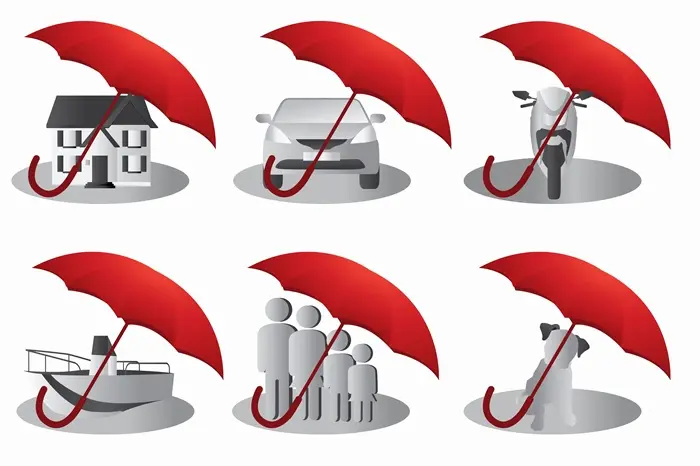The car insurance industry in California is undergoing significant changes. Several major insurers have recently announced their decision to reduce operations or exit the state entirely. This trend has raised concerns among policymakers, consumers, and industry experts. Understanding the reasons behind this exodus requires examining the complex interplay of regulatory, economic, and environmental factors unique to California.
The Regulatory Environment in California
California has long been known for its strict insurance regulations. The state’s Department of Insurance plays an active role in controlling rates and policy terms. While these regulations aim to protect consumers, they have created challenges for insurers operating in the market.
One key issue is the requirement for prior approval of rate increases. Insurers must submit detailed justifications for any proposed premium adjustments. The approval process can be lengthy and uncertain. This makes it difficult for companies to respond quickly to changing risk profiles or economic conditions.
The state also imposes limitations on how insurers can use certain factors in determining premiums. While these restrictions may promote fairness, they can limit insurers’ ability to accurately price risk. When companies cannot align premiums with actual risk exposure, profitability becomes unpredictable.
Rising Costs and Claims
The cost of doing business in California has been rising steadily across all sectors. For auto insurers, several factors contribute to increasing expenses that outpace premium growth.
Repair costs have soared due to several factors. Modern vehicles contain more advanced technology, making even minor repairs more expensive. Labor costs for auto repairs are significantly higher in California than in many other states. Supply chain disruptions have further driven up parts prices.
Medical costs associated with accident claims are another concern. California’s healthcare expenses rank among the highest in the nation. When accidents occur, the resulting medical treatments and related claims can quickly become expensive.
Legal system dynamics also play a role. While California has implemented some tort reforms, litigation costs remain high. The threat of large jury awards in accident cases contributes to higher settlement values. Insurers must account for these potential costs when setting reserves and premiums.
Climate Change and Natural Disasters
California’s unique environmental challenges present additional complications for auto insurers. The increasing frequency and severity of wildfires have created new risks for vehicles. Many policies include comprehensive coverage that protects against fire damage.
The 2020 wildfire season was particularly devastating, with numerous vehicles destroyed. Such catastrophic events lead to sudden spikes in claims that can strain insurers’ financial resources. While wildfires are not the primary risk for auto insurers, their growing impact contributes to the overall risk profile.
Other climate-related factors include flooding and extreme weather events. As these become more common, they add uncertainty to insurers’ risk models. Companies may find it difficult to accurately price these evolving risks within California’s regulatory framework.
Market Competition and Profitability
The auto insurance market in California has become increasingly competitive in recent years. The emergence of digital-first insurers has intensified price competition. Traditional companies face pressure to keep premiums low while maintaining adequate coverage.
At the same time, investment income—a crucial component of insurer profitability—has been affected by the low-interest-rate environment. With limited ability to generate returns from investments, insurers rely more heavily on underwriting profits. This makes adequate pricing even more critical.
When companies cannot achieve sustainable profitability in a market, they face difficult choices. Some may opt to reduce their exposure by writing fewer policies. Others may decide to exit the market entirely. This appears to be the calculation several major insurers have made regarding California.
The Role of the California FAIR Plan
For drivers who cannot obtain coverage in the standard market, California maintains an assigned risk plan. The California FAIR Plan serves as an insurer of last resort for auto coverage. As more companies reduce their presence in the state, the FAIR Plan may see increased participation.
However, FAIR Plan coverage typically comes with higher premiums and more limited options. If significant numbers of drivers are forced into this program, it could indicate broader market stress. The growth of the FAIR Plan might also discourage conventional insurers from expanding their California operations.
Impact on Consumers
The reduction in insurance options ultimately affects California drivers. With fewer companies competing in the market, consumers may face:
- Less choice in coverage options and providers
- Potential premium increases as competition decreases
- Longer wait times for customer service as remaining insurers handle more policies
- Possible coverage gaps if insurers exit mid-term
Low-income drivers may be particularly affected. Without access to competitive rates, some may risk driving uninsured—a situation that ultimately harms all motorists through higher uninsured motorist coverage costs.
Potential Solutions and Reforms
Addressing the exodus of insurers from California would likely require a multi-faceted approach. Potential areas for consideration include:
Regulatory modernization could help. Updating approval processes to allow more timely rate adjustments might improve insurer confidence. This could be balanced with strong consumer protections to prevent abuse.
Improved risk modeling for climate-related perils might help insurers better understand and price emerging threats. Collaboration between industry and regulators on this front could benefit all parties.
Efforts to control healthcare and repair costs could indirectly help stabilize auto insurance markets. These systemic issues affect multiple sectors but have significant impacts on claim expenses.
Enhanced fraud prevention measures might reduce unnecessary claims costs. While California has anti-fraud programs, additional resources could help curb abusive practices that drive up premiums.
The Broader Insurance Market Context
The challenges in California’s auto insurance market reflect larger trends in the property and casualty insurance sector. Several states face similar issues with insurers reducing exposure to high-risk areas. However, California’s combination of regulatory, economic, and environmental factors creates a particularly challenging environment.
Other lines of insurance, including homeowners coverage, have also seen pullbacks in California. This suggests systemic issues affecting the entire insurance marketplace rather than isolated problems specific to auto coverage.
Historical Precedents
This is not the first time insurers have retreated from certain markets. Various states have experienced similar cycles of contraction and stabilization. In most cases, market corrections eventually occurred through regulatory adjustments, new entrants, or changing economic conditions.
However, the current situation in California appears more severe than typical market fluctuations. The combination of long-term structural challenges with acute environmental threats creates unprecedented complications. This may require more significant interventions to restore market balance.
The Role of Technology and Innovation
Some industry observers suggest that technological innovations could help address California’s insurance challenges. Telematics-based insurance programs, which use driving behavior data to price policies, might offer one solution. These programs could allow more accurate risk assessment while complying with California’s pricing regulations.
Digital claims processing and fraud detection systems might help control costs. Artificial intelligence applications could streamline underwriting and customer service operations. However, implementing these technologies at scale requires significant investment—something insurers may hesitate to commit in an uncertain regulatory environment.
Conclusion
The departure of car insurance companies from California results from multiple converging factors. Stringent regulations, rising costs, climate risks, and competitive pressures have created a challenging operating environment. While consumer protections remain important, finding the right balance between regulation and market viability will be crucial.
Addressing this complex issue will require cooperation among insurers, regulators, and other stakeholders. Potential solutions may include regulatory modernization, cost containment measures, and technological innovation. Without appropriate adjustments, California drivers could face reduced insurance options and higher costs.
The situation serves as a case study in how environmental, economic, and regulatory factors can interact to reshape an insurance market. Other states may learn from California’s experience as they confront similar challenges. Ultimately, ensuring a stable auto insurance market benefits both consumers and the broader economy by maintaining essential protections for all drivers.
Related Topics:
8 Best Earthquake Insurance Companies

































